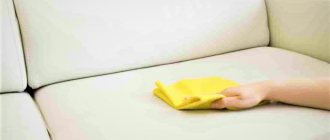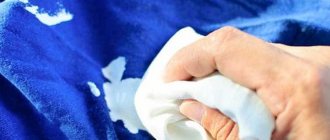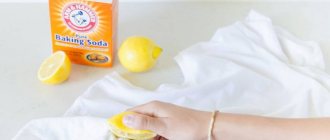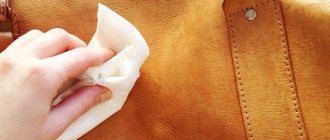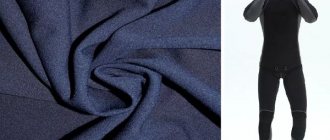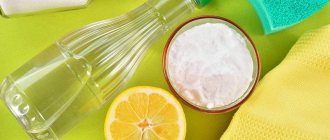Membrane clothing is confidently gaining its position. Therefore, it is important to understand how and with what to wash it correctly in a washing machine. Such products are chosen by active people; young mothers buy them for their children and wear them with pleasure themselves. The main characteristics of the membrane are the ability to repel water without disrupting natural metabolic processes. In order for things to retain their properties for as long as possible, they must be properly cared for. This is especially important in relation to washing.
- Membrane operating principle
- What to wash
- Wash in SMA and by hand
- Drying membrane products
- Care
- Storage
Membrane operating principle
The membrane fabric is something like a sandwich. The coating includes:
- The outer shell, which is often water-repellent.
- Protective layer.
- Gore-tex is a patented name for the membrane. This part can be represented by Teflon film or mesh with tiny pores.
- Protective material.
- Inner fabric.
Expert opinion
Irina. Housewife.
Ask a Question
Gore-tex provides the fabric with those characteristics that are highly valued by consumers: waterproofness and free steam escape. High-quality membrane items are not afraid of precipitation and wind; they are waterproof and not blown through. At the same time, nothing interferes with natural microcirculation, moisture from the inside evaporates freely.
Gore-tex membrane
Clothing of this type does not need down insulation: it does not allow cold air to penetrate inside, as a result, the body temperature remains unchanged. Some products use new generation synthetic insulation. For example, shelter is a progressive option, a thin layer of which provides excellent protection from the cold. For membrane clothing without insulating material, it is necessary to wear special thermal underwear or fleece underwear inside.
Membrane fabric is widely used in the production of outerwear by WLGore and Associates, Inc. (USA), Unitika (Japan), Aldous (Russia). It is used to make children's overalls, demi-season and winter thermal jackets, ski suits and pants. High-quality membrane items cannot be cheap, and you want to extend their service life as much as possible. This requires proper care.
Purpose of membrane clothing
Complex technology is used in the production of the material, which is explained by the purpose of the clothing. For example, a suit made of membrane fabric is recommended to be worn when engaging in activities that involve increased physical activity. These include:
- sports tourism;
- trips;
- winter fishing and hunting;
- other active sports and outdoor recreation.
Clothing made from membrane fabric can also be used:
- for everyday wear;
- for cardio exercises - running, cycling.
Membranes, which are thin films with micropores, are as follows, depending on their purpose:
- Windproof. Often used in conjunction with fleece fabric impregnated with a layer of water-repellent impregnation. Windproof membranes are quite practical and durable. Designed for use in spring or autumn.
- Wind and waterproof. They belong to the classic types of membranes. Designed for use during bad weather conditions. The main purpose is protection from precipitation. At the same time, the fabric has good windproof properties. Membranes are not picky about maintenance. The cost is high.
What to wash
When purchasing a product with a modern coating, many are afraid that caring for it will be too troublesome. Among the questions that interest consumers are especially popular: “What products should I use and how to wash the membrane in the washing machine?”
Means "Laska"
It is strictly forbidden to use ordinary powder, as its active detergents clog micropores, thereby destroying the unique properties of the fabric. Dry cleaning is also contraindicated for her. Hand washing with laundry soap is allowed, but this method cannot be called the most convenient.
If you have purchased a product with a membrane, do not forget to buy a special product for such clothing. They typically come in liquid or gel form and are suitable for both hand and machine washing. As an example, the following products can be mentioned:
- Cotico gel;
- Domal balm;
- "Weasel";
- Salton Sport shampoo.
What to consider when cleaning
Until recently, it was believed that membrane fabrics could not be washed. However, modern production technologies refute this statement. Moreover, such things simply need to be cleaned. But at the same time take into account some restrictions.
- Ordinary washing powder clogs the pores of the membrane with its crystals, which is why it loses its main quality - air exchange.
- Chlorine-containing detergents spoil the membrane, it stops rejecting water and becomes wet.
- Rinse aids and conditioners reduce the water-repellent properties of fabric.
- Water temperatures above 40 degrees will glue the pores together and also give the fabric a gray-brown tint, as the film will simply cook. For the same reason, things cannot be ironed or dried on a radiator.
- Spinning causes irreparable damage to the fabric fibers; they stretch and tear.
- Items made of membrane fabric should not be dried in the sun or wind. Ultraviolet radiation will leave whitish spots on the fabric, making restoration of the material impossible.
What to wash
The right detergent will not only remove dirt from your items, but will also not have a negative effect on the fabric.
Table. Detergents for washing membrane fabric
| Special cleaning gels | Features of application | Conventional means | Features of application |
| Nikwax Tech Wash | Cleans, gives water-repellent functions, allows the fabric to breathe. Recommended for Gore-Tex, Sympatex, Entrant, eVENT and Ultrex fabrics | Perwoll Sport & Active | Adds aroma and prevents unpleasant odors |
| DOMAL Sport Fein Fashion | Retains all the protective properties of the fabric | Concentrated product from Amway | It washes perfectly, especially children's clothes with characteristic stains from food and drinks. |
| DM Fresh Sensation | Recommended for Goretex, Sympatex fabrics, a budget product, but without water-repellent impregnation | Laundry soap, grated | Well suited for hand washing, removes grass stains, but leaves a very unpleasant odor. |
| Woly Sport Textile Wash | Universal membrane cleaner, suitable for any fabric | Baby soap (either in liquid form or grated) | An alternative to laundry soap, it works a little worse on stains, but leaves no odor. |
| Shower gels, shampoos | Mild detergents for washing by hand (as excessive foam is harmful to the washing machine) and not for the purpose of removing stains. | ||
| Liquid detergent "Laska" | Removes dirt well, but not effective for removing grass stains, suitable for children's clothes | ||
| Antipyatnin soap | An effective remedy against greasy stains, after use it is recommended to wash the item completely. | ||
| Fairy dishwashing gel | Excellent for removing oil stains and can also be used as a mild laundry detergent. |
This is interesting. Regardless of the chosen product, after 20 hand or machine washes, membrane fabrics lose up to 20% of their thickness.
As a rule, membrane fabric manufacturers produce care products, including those for washing clothes.
Wash in SMA and by hand
When washing by hand, you must first wet the item at a temperature not exceeding 30 degrees. The water should feel slightly warm. Using hot water is unacceptable - it will damage the membrane. It is also not recommended to soak membrane clothing.
Stuff in the washing machine
Distribute the product over the wet item. You can use a foam sponge for these purposes. Do not intensively clean the item with a hard brush. Heavy stains should be moistened generously with the product and rubbed with the back of the sponge, but without fanaticism.
The soaped item should be rinsed with warm water and repeated if necessary. There is no need to wring out clothes. It is only allowed to lightly squeeze out the water with your hands or let it drain, leaving it in an empty basin or in the bathroom for a while. The washed item should be wrapped in a terry towel so that it absorbs excess water.
In SMA it is necessary to use only delicate or hand washing, always without spinning. The liquid product should be poured into a special compartment, the item should be loaded, and the appropriate mode should be set. At the end of the cycle, remove the item, squeeze it very carefully and wrap it in a towel.
Conclusion
Membrane clothing is not as difficult to care for as it seems at first glance. Tips and recommendations are written on the bottles of most specialized products, as well as on the clothing itself. The earlier a product is purchased, the more impregnation it requires.
In most cases, there are no difficulties when washing, ironing and drying. It is enough to follow simple conditions and perform all actions in accordance with the specified order. Then the properties are restored and preserved faster.
Drying membrane products
Membrane jacket
The items should be dried horizontally, spread on an old blanket or sheet. When laying clothes, you need to straighten them very well, because ironing the membrane is unacceptable. Do not place clothing near radiators, heating electrical appliances or under the rays of the sun. It is recommended to shake periodically to ensure uniform drying.
Selecting a Cleaning Product
Before washing membrane clothing, it is important to decide on the choice of cleaning agent, to find out what can be used and what cannot be used. It is not recommended to use the following means:
- Dry washing powder. Particles of granules become clogged in the membranes; it is almost impossible to remove them by rinsing, especially if washed by hand. As a result, the fabric may lose its breathability.
- Conditioner-rinse aid. Gives the material a wonderful smell, but reduces its water-repellent properties.
- Chlorine-containing products. They cause the item to lose its hydrophobic properties and get wet in the rain.
- Stain removers. They act on the membrane as chlorine, contributing to the thinning of the fabric and loss of thermal insulation properties.
List of approved detergents:
- liquid washing powder;
- hair shampoo that does not create a lot of foam;
- shower gel;
- soap solution.
For membrane items, it is recommended to use special impregnations during and after washing. They help preserve the hydrophobic characteristics of the material and repel dirt.
Care
Items with a membrane should be washed when they become dirty, but this should not be done more than 2-3 times a year. Frequent washing weakens the waterproof properties of the fabric and reduces its resistance to aggressive environments. The most durable materials are Dermizax, produced by the Japanese company Toray. They can withstand up to 20 washes without any consequences. To maintain the waterproof and breathable characteristics of membranes at home, it is recommended to treat them with special impregnations. Among such means:
- Grangers.
- Nikwax TX.Direct Spray-On.
- Impregnation for Nikwax TX Direct Wash In membranes.
- Durable Water Repellent (dwr) wear-resistant material.
- REVIVEX spray.
These products significantly extend the life of things with a membrane. It is necessary to treat products after each wash, as well as periodically during wear.
Video
Getting rid of residual moisture?
The washed jacket must be dried completely. There are no special rules for drying the membrane; the main thing is to protect the fabric from high temperatures and ultraviolet radiation. Batteries, hair dryers, heaters are prohibited - it is better to lay the down jacket on a flat surface or hang it, and then leave it to dry completely.
Ironing is not advisable, nor is it necessary: the membrane fabric straightens on its own when properly dried. As a last resort, the item is ironed through a thick diaper or towel.
At the “finish”, the membrane jacket is treated with a special impregnation. This will enhance the protective properties of clothing and extend its service life. Especially if the item has been worn for more than two years and begins to leak water.
After washing, it is advisable to treat the membrane with impregnation!
Impregnation is applied according to the instructions. Some are sprayed from a distance of 10-20 cm, while others require soaking in the solution. The main thing is to purchase a product for clothing, and not an analogue for tents and awnings.
Useful tips
In order not to disturb the special structure of the material, you should not iron it. The fabric does not tolerate high temperatures; the synthetic layer may melt. It is allowed to use a steam generator if the clothes are very wrinkled.
Some more useful care tips:
- Membrane jackets should be stored in a dry cabinet, in a horizontal position, clean and dried.
- Use special bags for things to prevent dust from settling on the surface.
- Do not wash every time after a trip to the ski resort. Only clean again if an unpleasant odor appears.
How to dry properly
You can save time and at the same time dry the item efficiently in a machine or dryer. When using equipment for drying, it is necessary to set the most gentle modes. We must not forget that the membrane material does not like high temperatures. A similar rule should be followed during ironing.
You can dry membrane items in the standard way. After the water has drained from the material, it is recommended to place the item on a horizontal dryer. If you first straighten the clothes so that there are no wrinkles, then further ironing will be easy to avoid. At room temperature, a suit or jacket will dry fairly quickly. You can also hang the item to dry on a vertical dryer, waiting until the material dries on its own.
In order to keep things safe, you do not need to use a radiator or heater to dry. Such devices generate too much heat, which can negatively affect the properties of the material. It is not recommended to hang membrane clothing outside in direct sunlight. Ultraviolet light can leave stains on the material.
If there is a need to iron a thing, you should also be careful. On top of the membrane you need to put a material made of fairly thick cotton. It is best to take a towel for this purpose. It is recommended to avoid ironing if it can be avoided. By adhering to such measures, it will be easier to preserve the properties of the fabric.

